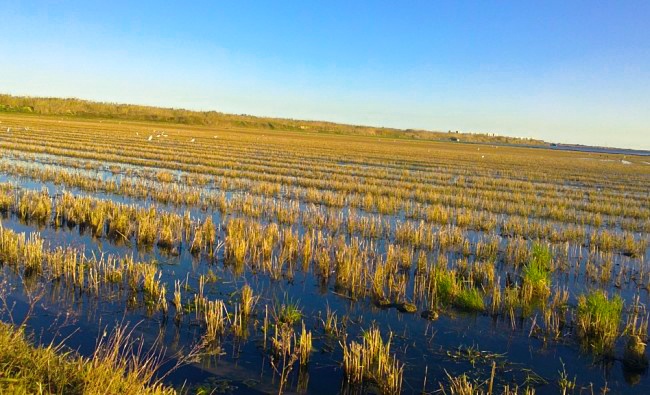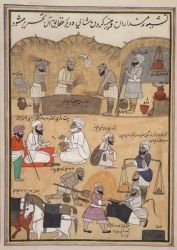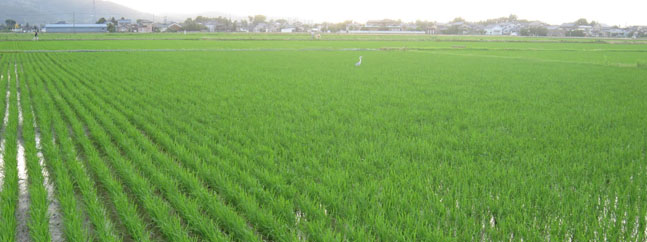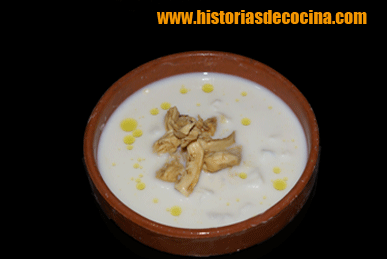
Reliable sources seem to credit Alexander the Great (356-323BC) with having introduced rice into Mesopotamia in the latter half of the 4th century BC. According to Strabo (Greek Geographer: 64BC-24AD), by the end of that century rice was already an established crop in the Euphrates valley. From Persia, it spread to Syria, Asia Minor and Egypt.
Alexander personally sent samples of rice (orýza) to Greece around 320BC, although it was not a success as a crop. It was considered a very exotic species of plant in Greece; it was used primarily in medicine, especially as rice water, but was barely used as a food source. Although Athenaeus and Sophocles (496-406 BC) mentions that rice flour could be used to make a bread called oríndes, it is by no means certain that they were referring to the same seed.
The Romans became acquainted with rice via the Greeks, as the Latin version of its name (oryza or oriza) reveals, but they imported it from Syria and Egypt. It continued to be an exotic product, being used mainly in medicinal compounds since infusions made with rice (‘rice water’) were believed to exert a calming effect on intestinal ailments. However, it was beginning to crop up in the occasional culinary recipe during this period: Apicius mentions using rice flour, or fecula (starch), to thicken a sauce.
 Between the 8th and 10th centuries, the Arabs introduced rice into Morocco, Spain, Madagascar and Sicily. It did not acquire importance in Europe, as either crop or foodstuff, until the Arab peoples implanted it firmly in the Iberian Peninsula after 711. However, there is a school of thought that maintains that rice reached Spain earlier - in the 6th century - from Byzantium.
Between the 8th and 10th centuries, the Arabs introduced rice into Morocco, Spain, Madagascar and Sicily. It did not acquire importance in Europe, as either crop or foodstuff, until the Arab peoples implanted it firmly in the Iberian Peninsula after 711. However, there is a school of thought that maintains that rice reached Spain earlier - in the 6th century - from Byzantium.
The first big rice fields in Spain, and Europe, were planted by the Muslims of Al-Andalus in the river deltas of the Guadiana and Guadalquivir. Around the 10th century (during the caliphate of Abdurrahman III), rice-growing began in areas of Spain’s east coast (Levante) such as Valencia’s Albufera and the municipalities of Catarroja, Ruzafa, Silla and Sueca. During the 11th century, the plantations were expanded and irrigation systems improved as a result of population growth caused by an influx of Andalusís who had migrated up from the south after the fall of the caliphate and the concomitant civil war. The Spanish name for rice – Arroz – derives from the Persian orz, to which the Arabs prefixed the particle al. Al-orz subsequently evolved into ar-orz and ar-ruz, in which form it appears in a 13th-century Hispano-Mahgrebi manuscript. The word arroz makes its first appearance in Castilian Spanish in 1251 in a translation from Arabic of a collection of oriental stories entitled Calila e Dimna, commissioned by the figure who would later become known as Alfonso X, the Wise (1221-1284).
Because it was such a difficult crop to grow, rice remained a luxury product throughout the Middle Ages. Noteworthy among traditional Arabic-Andalusí recipes are those for dishes in which rice is cooked (over the fire or in the oven) in fresh milk or almond milk, which can be sweetened and flavoured with various spices. The usual thing was to grind the rice grains before cooking so that the end product resembled sweet porridge. A late medieval cookery book from the Kingdom of Aragón, the oldest of its kind in the Catalan language, includes this same recipe for cooking rice with almond milk and cinnamon.

The Christian reconquest of the Levante by the army of Jaime I of Aragon (1208-1276) between 1232 and 1245 wrought drastic changes to Valencia’s rice fields. For one thing, rice was perceived as Muslim food, the growing of which took up space that could be devoted to traditionally Christian products; for another, the medical and dietary theories that were starting to take shape, especially from the 14th century on, caused links to be detected between the wetland environment where rice was grown and public health problems. Proximity to the rice fields was believed to cause illness and, furthermore, food grown in muddy, foul-smelling conditions could not be nutritionally beneficial. In some places, therefore, prohibitions concerning rice-growing were issued intermittently in the 15th, 16th, 17th and 18th centuries, especially after the expulsion of the Spanish Moriscos in 1609, during the reign of Philip III (1578-1621). Against all odds, however, it did not disappear completely as a crop.
From the 16th century on, descriptions of meals eaten at the Spanish Court make quite a frequent mention of a dish called 'manjar blanco': this medieval sweet rice dish (recipe and instructions below) - a favourite with the aristocracy - was made with ground rice flour, shredded poultry meat, almonds and cane sugar. Over time, the recipe discarded the meat element and it became the dessert dish that is still eaten in certain parts of Spain (such as Montblanc, Tarragona and other municipalities in Catalonia), a kind of solid custard (or blancmange) made with rice flour, ground almonds, sugar, cinnamon, lemon peel and water.
In the 17th century, the expulsion of the Moriscos combined with the European economic crisis triggered a dramatic drop in the population of Spain, the knock-on effect of which decimated demand for certain crops, including rice. Even so, documentary evidence dating from halfway through the century attests to the existence of rice fields in Murcia, on the fertile banks of the Segura River, and beside the Argos, in Calasparra.
The 18th century, by contrast, saw an increase in population, which tripled in Valencia between 1718 and 1787, and farming and rice growing thrived once more in consequence. Rice plantations increased in size in Valencia and Murcia, creeping ever closer to centres of population in defiance of official bans. The epidemics of tertian fever (malarial fevers so-called because of their repeated three-day pattern and caused by Anopheles mosquito bites) that occurred as a result claimed many lives. After the worst outbreak of malaria, in 1804, rice fields were forced to retreat further away from the towns.
In the first thirty years of the 20th century, rice-growing began to take on a significant role in Valencia’s economy. This was particularly true from the First World War (1914 – 1918) on when demand increased for all types of cereal, among other essential products, destined for the rest of Europe. It was this fact that lay behind the Spanish Government’s attempt to limit rice exports so that domestic demand, which was also growing, could be met. During the Spanish Civil War (1936 – 1939) and the post-war period, consumption of rice increased still further.
However, from the 1940s on, production started to decline in Spain’s eastern provinces such as Valencia and Murcia (the water for whose rice fields was provided by the rivers Turia, Júcar and Segura) in favour of such new regions as Seville, Extremadura, Huesca, Zaragoza, Navarra and Tarragona, where the crop was implanted mainly along the banks of the rivers Ebro, Guadiana and Guadalquivir.
From the 1960s on, cultivating and harvesting processes became increasingly mechanized, and producers found themselves gradually having to raise the quality of their product to meet the demands of a now better-off public. They also started to grow long-grain rice varieties which until then had not been a cost-effective option.
Manjar Blanco - Medieval
The recipe was first referenced in "The Book of Sent Soví". It does not specify the quantities or the timings. However, in other references, it is mentioned that the quantity of almonds is the same as that of the broth and the elaboration process is better detailed. If you fancy discovering a medieval Spanish recipe just follow these steps:
Ingredients:
1 litre of chicken broth.
1 kg of Almonds
A tablespoon of sugar.
Rosewater .
Rice flour.
Salt.
We prepare a broth with the chicken's quarters and boil them slowly for about 2 hours, strain it and remove the fat - let it cool and once all the fat has risen to the top, scoop it off.
We add the chopped and peeled almonds to the broth and we boil it for about 20 minutes, then strain the mixture in a cloth strainer pressing until all the liquid comes out, put it back on the heat, add a tablespoon of sugar, and a splash of rose water and without stopping slowly mix in the rice flour until obtaining the thickness of cream and add salt to taste.
Shred the chicken meat off the bone and sprinkle on top and serve.
